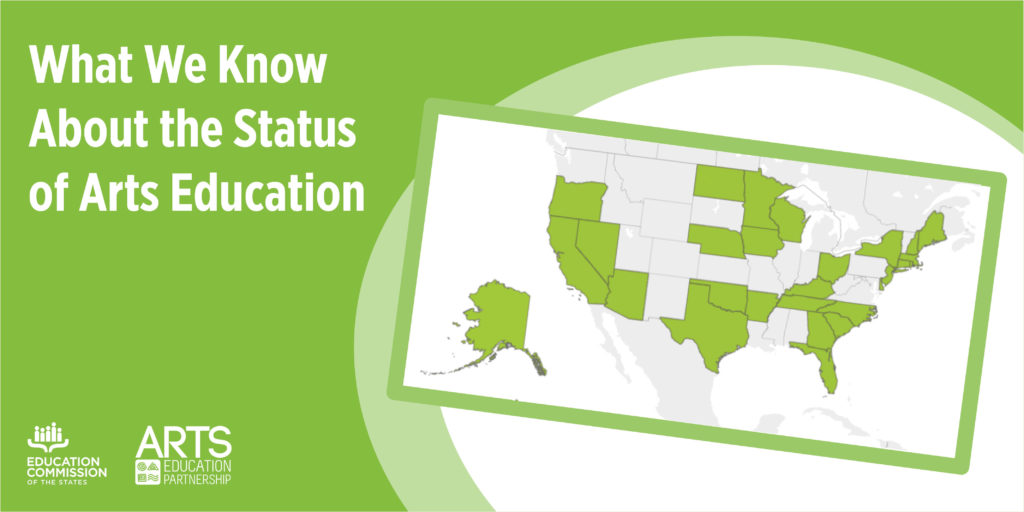What We Know About the Status of Arts Education

Jamie Kasper and Claus von Zastrow also recorded Talking About Arts Education Data, a corresponding podcast episode for the Arts ARE Education Talk It Up podcast.
In May 2021, AEP published a post titled What We Know – and Don’t Know – About the Status of Arts Education. That post attempted to capture a baseline status of K-12 arts education in the United States, including data that were collected at the state level. This post in November 2022 updates the original information a year and a half later.
In the original post, we found that:
- 24 states reported some kind of data about arts education.
- 19 states reported data on student enrollment in arts courses.
- 17 states reported educator data.
- No states included information about student achievement in the arts in their state data reporting.
- There was no consistent state-level information about funding for arts education, how much time students spent in arts courses, students’ access to other arts professionals like teaching artists, or engagement in arts learning outside the school day and other benchmarks.
What has changed
28 states now report statewide arts education data, compared with 24 states in our original post. Since May 2021, Delaware, Georgia, New Hampshire and Rhode Island have come online with their data reporting systems as part of the Arts Education Data Project. All four states report student enrollment data, bringing the total of states reporting those data to 23. All four states also report educator data, bringing the total of states reporting data on arts educators to 21.
Since our original post, the Arts Education Data Project and NAMM Foundation released a National Arts Education Status Report for 2019. The report details access, participation and educator data from states who participate in the Arts Education Data Project. In the report, the authors estimate that more than two million students in the United States did not have access to any arts education during the 2018-19 school year. We don’t yet have aggregate data to judge the effect of the pandemic on those numbers.
What hasn’t changed
In the original post, we found that students were much less likely to both have access to and take courses in dance and theatre compared with music and visual arts. With the new state data, this finding has not changed.
Even with the addition of Delaware, Georgia, New Hampshire and Rhode Island to the states reporting arts education data, there is still no consistent information available about student achievement, funding, instructional time, supplemental learning or out-of-school engagement in any state. Some out-of-school data might become available over the next few years as states and districts report on their use of federal Elementary and Secondary School Emergency Relief (ESSER) funds. These funds included dedicated categories for summer and afterschool programming and enrichment, and half of the states proposing to use ESSER funds for the arts earmarked that funding for summer and afterschool learning.
Where we go from here
When it comes to pandemic response, statewide data are useful, even if they don’t describe the most current school year. Of the 28 states reporting arts education data, only five – Connecticut, Delaware, Kentucky, Nebraska and Oregon – report data from the last full school year, 2021-22. In one state, the most recent data are from 2016.
Early evidence suggests that the pandemic negatively affected student participation in arts courses. For example, the share of Delaware students taking at least one arts course fell by three percentage points between 2019-20 and 2021-22. In Connecticut, course enrollments in the arts declined by 7% over the same period. In other states, however, it could take years to form a clear picture of the COVID-19 pandemic’s effect on arts education.
In the next year, the Arts Education Partnership (AEP) will be working to extend the work of the State Data Infrastructure Project for Arts Education by convening an Arts Education Data Working Group. AEP’s working groups form to explore a specific issue, and we hope this new group will help to guide our emergent work in data. If you’re interested in being a part of that group, please reach out!



